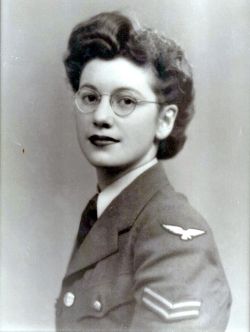Women In Cyber: The Beginnings
Ada Lovelace
Ada Lovelace was a mathematician and writer in the early 1800s, best known for her work on the Analytical Engine. During her career she worked with Charles Babbage, who developed the concept for the first digital programmable computer. She was a highly educated woman for her time and took immense care in her studies, to which she devoted most of her time. By the time she passed at only 36, she had contributed to some of the most important research in our field. Her notes on the Analytical Engine and suggestions for its programming eventually aided in the development of the first modern computer.

Prior to her job as assistant to the ‘father of computers’, she received her education from private tutors and mathematicians for most of her life, taking special interests in calculus and metaphysics. She lived in London during the mid 1800s when women were still not allowed into university. Lovelace was also heavily interested in phrenology, the practice of measuring bumps in the skull to predict mental traits. She often described herself to be an analyst, as her main interests were rooted in exploring the work of other experts. Many of which she came into contact with because of her social standing. Her father, Lord Byron, a famous poet, and her mother, Anne Isabella Milbanke, the founder of the first industrial school in England, placed Lovelace in high social regard. This allowed her to interact and draw inspiration from the likes of Charles Dickens and Sir David Brewster.
She carried out and assisted with multiple research projects throughout her life. When she met Babbage, Lovelace became fascinated by his difference engine, an automatic mechanical calculator. The Analytical Engine became its much more reformed successor to which Lovelace completed most of her work on. It was the first design for a machine that was structured in the same way as today’s modern computer, with the ability to hold memory and recognize data sets. However, the machine itself was never created in its entirety due to conflicts with Babbage's advisors. So, it was the design plans and formulations that Lovelace dedicated most of her time to. The plans were so well developed that they were heavily analyzed and had several papers written on them, including one by the Italian engineer Luigi Menabrea. This is where Lovelace’s most acclaimed work originated. She spent several years translating the article and then created a set of seven notes elaborating and detailing Menabrea’s observations while also articulating the machines’ capabilities in greater lengths. The article written by Luigi totaled no more than 8,000 words, Lovelace’s notes summed to over 20,000. The seventh note contained an algorithm for the machine which is now considered the first computer program. The algorithm calculated a sequence of Bernoulli numbers, which meant that the machine would be able to read sequences for the purpose of analysis. This is why many consider her to be the first programmer even though her algorithm was never able to be tested. Her other notes included visions for furthering the capabilities of the computer beyond just calculations.
Joan Clarke
Joan Clarke, a young girl from London, earned a double first degree from Cambridge in mathematics before being recruited by the Government Code and Cypher School just before the beginning of World War II. It is at this school that Clarke would play a pivotal role in cracking the German Enigma Code which was being used for secret Nazi communications. She was the only women to work alongside Alan Turning who would ultimately be recognized as the figure head of the operation. The encryptions were being created by what was called the Enigma Machine which scrambled a message and sent it through a light up keyboard. The receiver would then use a cipher to decrypt the message. The problem was that the Germans were the only ones with a cipher for the machine. Clarke’s job was to decipher the code as it came in. Most messages were related to German U-boats that were attempting to track and shoot down U.S. ships carrying troops to Europe. Clarke played a pivotal role in breaking the Enigma code but her efforts went largely unrecognized for years. Sexism combined with the secrecy of Bletchley Park meant that her contributions quickly became lost to time. More recently though, her efforts were highlighted in The Imitation Game (2014), a film centered around the breaking of several German codes during World War II.

Hedy Lamarr
Around the same time Hedy Lamarr was working on similar efforts to weaken German forces. The actress turned inventor became well known for tinkering on set and in her free time. She redesigned planes, designed an improved version of the stoplight and even created a dissolving tablet that made water taste like Coke, all before the age of thirty. It was in 1940 that Lamarr would help make one of the greatest contributions to technology that the world had seen, but it wouldn’t be until years later that we would truly recognize the importance of her work. Lamarr met George Anheil, a composer and inventor, and the two quickly hit it off, beginning their work on a torpedo navigation system. The current issue was that the guiding systems on torpedoes could be easily interrupted before finding their target, sending them far off course or rendering them completely useless. Together they created a system that used joint frequency hopping between the transmitter and receiver. They patented the invention and attempted to present it to the military, but the system was rejected on the grounds that it needed further testing and was currently too large. The pair eventually abandoned the invention, but Lamarr would continue to experiment and act throughout her life.

Decades later the frequency hopping technology would be used to invent Wi-fi, Bluetooth and even GPS. Only after her death, would Lamarr get the recognition she deserved by being inducted into the National Inventors Hall of Fame and receiving several awards for her work.
Grace Hopper
Grace Hopper is another notable name in computer programming and software development. Following her graduation from Yale, Hopper became a naval officer after the bombing of Pearl Harbor. She was assigned to the Bureau of Ships Computation Project at Harvard University and focused on the MARK I, the first electrochemical computer in the U.S. In this role Hopper completed countless calculations for the war-effort and she even developed a manual for the computer that was 561 pages long. After the war she continued to work on MARK II & MARK III with the Navy. After her work with the Navy, Hopper had a long and successful career in computer programming, even creating a compiler that worked to make machine-readable code out of mathematical code. Arguably her biggest contribution to computer programming was in 1953 when she began working on word-based programs. At the time this was an extraordinary feat as programming used mathematical symbols and Hopper’s new method used word commands. This went on to influence modern day computer language and programming methods not just in the U.S. but around the world. Thankfully, her contributions have been widely recognized throughout her career, earning her the nickname ‘Amazing Grace’ by her colleges. Hopper retired from the Navy at 79 years old, making her the oldest serving officer in the U.S military.
_head_and_shoulders_crop.jpg?mode=max&width=274&height=365)
Almost 75 years later the technology landscape would look worlds different, but one thing would remain the same: the continual advancements made by women in the field of cyber.




